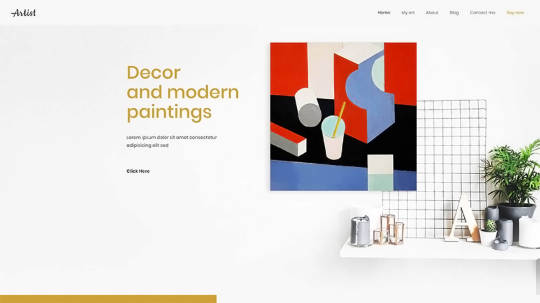#carbon8
Text
Modal Carbon8 Experimental Synth - All Playing, No Talking
Chris Martirano shares an awesome example of the sounds and capabilities found on the Modal Carbon8
Modal Electronics Carbon8 uses over 40 complex digital algorithms and advanced oscillator modifiers to produce contemporary and unusual sounds for modern music production and performance. With a massive array of 34 filter types, shapeable LFO waveforms, a powerful sequencer/arpeggiator section and…

View On WordPress
0 notes
Text
CO2ntainer : une invention de Carbon8 pour valoriser les déchets des cimenteries

L’entreprise britannique Carbon8 a développé un procédé qui utilise le CO2 ainsi que les déchets des cimenteries pour produire des granulats utiles. La technologie CO2ntainer équipe déjà la cimenterie Vicat de Montalieu-Vercieu. ...
Read the full article
0 notes
Photo

米沢市のインドアフィールドCROWN初参戦の動画をYouTubeにアップしました。 #米沢市 #サバゲー #youtube #airsoft #insta360go2 #carbon8 #striker9 #surefire #surefirex300 #esscrossbow #vn https://youtu.be/p8bxI46cfAo https://www.instagram.com/p/CbdXMu-B3pn/?utm_medium=tumblr
0 notes
Photo

モデルガンな日々 13 . KSC beretta M93R . . . . . #モデルガンな日々 #instagramjapan #instagram #insta #モデルガン #cz75 #cz752nd #cz75second #carbon8 #エアーガン #ガスブローバック
0 notes
Text
"We're taking CO2 out of the system" says carbon-capturing concrete maker Carbicrete
Montreal company Carbicrete has developed a method for sequestering carbon in concrete, claiming its product captures more carbon than it emits.
The technology cuts out the need for calcium-based cement, a key ingredient in traditional concrete that is responsible for around eight per cent of all global CO2 emissions.
"It's negative emissions," Carbicrete CEO Chris Stern told Dezeen. "We're taking CO2 out of the system every time we make a block."
Concrete locks carbon away "forever"
The company is one of many that is racing to find low-carbon or carbon-free alternatives to traditional concrete but is one of the only ones claiming to have achieved negative carbon.
Instead of cement, Carbicrete's system combines waste slag from the steel industry plus carbon captured from industrial plants that would otherwise have gone into the atmosphere.
"We're taking it from there and then injecting it into concrete and getting rid of it forever," Stern said.
More carbon is captured during the production process than is emitted during the manufacture of the concrete, making the resulting concrete carbon-negative according to Stern.
Top and above: Carbicrete technology can be used to create carbon-negative concrete masonry units
However, the process relies on emissions produced by other industries, so it is helping to reduce the amount of additional CO2 going into the atmosphere rather than actively removing it from the atmosphere.
But as CO2 captured from the sky via direct air capture (DAC) companies such as Climeworks becomes more affordable, concrete could start to play a part in lowering concentrations of atmospheric carbon.
"We'd love to get it from a direct air capture unit," Stern said. "We're not there yet just because the industry is not there yet but it's certainly well-positioned for us."
Technology could eliminate hundreds of megatons of emissions
Carbicrete, which was founded in 2016, licenses its technology to concrete manufacturers who can integrate it into their existing production processes for concrete masonry units (CMUs) and precast panels.
In collaboration with Quebec manufacturer Patio Drummond, the company is building up its production capabilities to 25,000 CMUs per day while the first building using material is set to be built in Canada at the start of next year.
Once scaled up, Stern believes the technology can help to reduce the 2.2 billion tonnes of carbon emissions that are generated by the cement industry every year.
"We can take care of megatonnes on a yearly basis, [capturing] anywhere between 100 and 300 [million tonnes of CO2]," Stern explained. "So it's definitely going to make a dent."
Process works without cement
Carbicrete's technology cuts out the need for cement, the binding agent that makes up around 12 per cent of traditional concrete but is responsible for half of the material's carbon footprint.
To make cement, calcium carbonate (usually in the form of limestone) is heated to around 1,480 degrees Celsius to extract calcium oxide.
This process releases carbon dioxide, which accounts for 40 per cent of limestone's mass, into the atmosphere. The energy-intensive process is usually powered by fossil fuels, creating additional emissions.
Carbicrete's method circumvents these emissions, cutting out approximately two kilograms of CO2 for every concrete masonry unit.
As a substitute, the company uses a waste byproduct from the steel-making process called slag, which contains calcium oxide.
In traditional concrete production, cement is cured with water, causing the calcium to react with the CO2 in the surrounding air and turning it back into strengthened calcium carbonate.
The company is currently scaling up its processes to produce 25,000 CMUs per day
But in Carbicrete's system, the calcium oxide is instead injected with CO2 captured from industrial sites. This curing process creates calcium carbonate, which helps to fortify the concrete.
"It's effectively doing the same job as hydration in a regular concrete product," Stern explained. "The chemical composition of a concrete block that we make is exactly the same as a regular concrete block but we take a different road to get there."
This curing process takes 24 hours and stores away three kilograms of CO2 per CMU by converting them into a stable mineral, alongside an additional kilogram of CO2 that is pulled from the surrounding air during the curing process.
"The only way CO2 will escape one of our concrete blocks is if somebody burns the block," Sten said. "And nobody does that on purpose."
The resulting carbonated concrete can have up to a 30 per cent higher compressive strength than conventional concrete, the company claims. And since its production process requires no heat, Stern says its energy consumption is "literally not comparable" to that of traditional cement.
System is dependent on steel slag supply
However, the scope of Carbicrete's potential is limited. Currently, its carbon curing process can only take place in the controlled environment of a factory, restricting its use to products such as CMUs and concrete panels that are cast in advance of being delivered to a construction site.
This precludes its use in liquid ready-mix concrete, which is cast and cured on-site to create a building's foundations and floors. To serve this market, Carbicrete is developing a new technology that won't be ready for another five to 10 years.
"It all comes down to how we can make a mobile, flexible curing system and have that on-site," Stern explained.
The technology can so far only be used on precast CMUs and panels rather than ready-mix concrete
Another problem is the supply of steel slag. Only around 250 million tonnes of the industrial byproduct are produced every year compared to four billion tons of cement.
"There's not enough steel slag to make enough concrete to serve the world's needs on a yearly basis," Stern said.
"It's possible to replace 10 to 20 per cent of the current concrete production," he added. "But concrete is the second most-consumed resource on the planet outside of water. So if we make a billion tonnes of concrete, that's a massive amount."
Potential of carbon-cured construction materials
A number of other companies are exploring alternative methods to reduce the carbon footprint of concrete. Although these solutions are not carbon neutral, they are currently available at a much larger scale.
New Jersey-based Solidia uses carbon instead of water to cure a special cement that is low in lime, reducing CO2 emissions by up to 70 per cent.
Amazon's HQ2 in Arlington will be built using CarbonCure concrete
Meanwhile, Canadian start-up CarbonCure uses captured CO2 emissions to cure regular cement, reducing the amount of cement needed to create a batch of ready-mix concrete and cutting emissions by five per cent.
More than eight million cubic metres of concrete has already been made using the company's technology.
This equates to thousands of buildings, according to CarbonCure's senior director of sustainability Christie Gamble, as will also include "every cubic metre of concrete" in Amazon's new NBBJ-designed headquarters in Arlington, Virginia.
"Carboncure is on a mission to reduce 500 megatonnes of carbon emissions annually by the year 2030," Gamble told Dezeen. "To date, we've been able to reduce over 100,000 tonnes of CO2. We're proud of that reduction so far [but] we still have a long way to go."
CarbonCure injects CO2 into standard concrete mix from a pressurised tank
Elsewhere, UK company Carbon8 Systems has developed a modular technology that fits into a shipping container and can be installed at cement plants to capture their CO2 emissions.
These are then used to cure bypass dust – a powdery byproduct of cement production – creating a "carbon-negative aggregate" that sequesters cement industry emissions while also cutting out the emissions associated with mining and transporting traditional aggregate.
When taken together, UK Concrete estimates that these kinds of carbon capture, utilisation and storage (CCUS) technologies could deliver 61 per cent of the carbon savings the concrete and cement industry claims it needs to make to become net carbon negative by 2050.
"The answer is not that you use CarbonCure or this other sustainability solution," Gamble said. "The answer is: use both and incorporate all of these strategies."
Carbon revolution
This article is part of Dezeen's carbon revolution series, which explores how this miracle material could be removed from the atmosphere and put to use on earth. Read all the content at: www.dezeen.com/carbon.
The sky photograph used in the carbon revolution graphic is by Taylor van Riper via Unsplash.
The post "We're taking CO2 out of the system" says carbon-capturing concrete maker Carbicrete appeared first on Dezeen.
0 notes
Text
Tips On Designing Creative Websites That Will Wow Your Clients

The global market keeps getting bigger and bigger, which should be good news for web designers – but there’s a catch.
The clients you can expect to serve are more sophisticated and want creative websites, not just the regular HTML and CSS.
You can’t deliver just anything and expect them to be happy. You’ll also have some serious competition to contend with. As a consequence, your website must adequately address an ever-growing need for improvements. Like in flexibility, responsiveness, and conversion optimization.
Fortunately, the cloud has a silver lining; and a bright one at that. Tools to meet these challenges and address them head on are readily available. With the most notable case in point being Be Theme, the largest and most versatile WordPress theme of them all.
With a tool like Be Theme at your fingertips, you’ll be more than able to successfully handle any challenge that comes your way.
Then, it’s simply a matter of following these 5 simple steps to design creative websites. They are eye-catching, impressive in their ability to convert visitors to users and guaranteed to put smiles on your clients’ faces.
5 Steps to Building Astoundingly Creative Websites
Step 1: Choose a Mesmerizing Color Palette
The color palette you use can make a difference between a so-so website and an attention-getting one. Choosing one should not be difficult if you follow a few simple rules:
its colors need to attract instant attention;
they need to be on-brand, and;
the color palette you select needs to visually support the message your app or website is designed to convey
Artist features BOLD color touches that will instantly attract attention.

This Be Theme pre-built website is another great example of what can be accomplished with an eye-grabbing color palette.

Carbon8 is an example of how to align the color palette with the website’s brand. It is done with its clever use of various shades of green. Note how the deep green element draws visitor’s eyes to the center of the page.

BeInsurance features a subtle, crisp color palette. It perfectly reinforces a strategy of using crisp, clear images to gain the clients you need.

BeFestival is a great example of using a color palette designed to appeal to a larger audience.

Step 2: Display Crystal-Clear Photos and Images
This step should be obvious. A crystal clear presentation suggests the business behind it goes the extra mile. That is when it comes to clearly present their products and services. Using the best images you can get your hands on can give you an extra edge over the competition.
BeStylist is an example of the advantage of displaying images with flair. The crisp image definitely supports the intended message.

Or, try something like RansomLTD; minimalist, yet crisp and powerful.

A pre-built website like Zajno illustrates how crystal-clear pics can be used to display your creativity.

The Design Shop employs flair and creativity to entice visitors with crisp and compelling images of your products.

Step 3: Show Visitors How Your Creativity Benefits Them
Creativity isn’t about you. It’s about serving your visitors. It can be extremely effective when it helps them imagine themselves actually using your product or service.
BeMarketing’s homepage video illustrates another way to show people how they can benefit from using your products.

Lane illustrates a fabulous approach you can use to express your structural design perspectives.

BeSimple takes a minimalist approach. It’s the typography and way the text is presented rather than the text itself that’s effective.

BeTravelBlogger provides the basis for a travel blogger’s dream site. You can use it to present your travel adventures and escapades with a super-cool layout of graphics and snippets.

Step 4: (Over)use “White” Space
Yes, it’s true. White space is a design element you can sometimes overuse without causing harm. In fact, in many cases “more is better”, as is obvious in the following examples.
Makespace has a clean design that allows the eye to focus on key elements, imagine, and create.

BeSketch & The Drive New York are two examples where plenty of white space is used to great effect.


When white space is part of the brand it can really help to drive the message home. BeIcecream is an extreme example of how plenty of white space can be used to great effect.

Step 5: Make Your CTAs Grab Them By The Eyeballs
If you don’t have CTA buttons that can’t be ignored, your website isn’t going to convert as many visitors into users as you hoped or planned. You want those buttons to be big, bright, and bold enough to make people feel they absolutely have to be clicked on.
BeDrawing’s CTA button is above the fold as it should be, and it clearly stands out. You can’t help but notice it the instant you’ve finished reading the headline. Its centering on the page makes it serve as a gate that invites visitors to enter.

Stuart makes effective placement and use of 3 clearly defined CTA buttons.

Your CTA can match other elements on the page and still easily attract attention. A great example of this is BeKids, where the color of the button matches the color of other hero section elements.

Building Creative Websites – a Summary
Follow these surefire steps (with the help of a surefire website building tool) and you’re well on your way to satisfying the most demanding of clients. Crisp, stunning visuals, a cleverly chosen color palette and the clever use of white space, images that enable visitors to see themselves using your products, and the all-important bold and beautiful CTA buttons give you the combination for success.
Success typically breeds additional work. Sometimes web design is not as much fun as it used to be. If you suddenly find yourself juggling projects and deadlines to the point you’d be better off using pre-built websites.
You’ll find the most generous gallery of more than 450 creative websites on Be Theme that you can customize to your liking. Start using them now and you’ll never have to worry about juggling projects and deadlines!
[– This is a sponsored post on behalf of Be Theme –]
Source
from Webdesigner Depot https://ift.tt/2lhFeAD
from Blogger https://ift.tt/2kTtgx2
0 notes
Text
炎天下でCO2 Carbon8 Cz75 2nd CO2 ブローバック エアガンレビュー 2023年6月
youtube
0 notes
Text
Tips on developing creative websites that will wow your clients
Advertise here via BSA
Web designers: we’ve got fabulous news for you.
With the global market expanding without limits, clients are more demanding than ever before. They understand that the highly competitive business realm requires creative websites. That’s good news: as competition increases, web development projects become more challenging. That’s good news for Be Theme too as it is the largest and extremely versatile.
It’s important to realize that the high level of competition demands creative websites for the most demanding eyes. They clearly understand the need for websites that are flexible and conversion-optimized. That’s more good news: This is your opportunity to wow these clients by building great creative websites for them.
Bonus GREAT news: Below you can find the 5 simple steps to creating a website that’s both eye-catching and built to convert visitors into users.
5 steps to building astonishing creative websites
Step 1: Choose a mesmerizing color palette
When it comes to creativity, choosing a color palette needs to follow a few simple rules:
it needs to attract attention instantly
it needs to be on-brand
it needs to visually support the messages
Artist has BOLD color touches that instantly attract attention.
You can find another great example of the eye-grabbing color palette on this pre-built website included in Be Theme.
Carbon8 does a great job at aligning the color palette with its brand – deep green and shades are abundant (and makes for a visually memorable website).
BeInsurance uses a subtle, crisp color palette. It is perfect for reinforcing their message: Give crisp, clear images to gain the clients you need.
And if you’re looking for a color palette that appeals to a larger audience, BeFestival can be a perfect example.
Step 2: Display crystal-clear pics
This one should be a no brainer.
People want to know EXACTLY what your business offers them. It’s not just a matter of “I like it” or “I’m not a fan of bright-colored icons”.
The clear presentation allows your clients to present their products and services with flair and clarity. They need that extra edge compared to all the existing competition they are up against.
BeStylist proudly displays images with flair. Just by looking at these images, you can tell how easy it is to use and you can even figure out how the color codes work.
You can do a similar website with RansomLTD. It is a pre-built website designed from scratch to display High-Density digital images. (there are SO many of them out there in dire need of a better website).
But you can also choose a more general pre-built website like Zajno to display crystal-clear pics to display your creativity.
The Design Shop displays your products with flair and creativity. It allows visitors to have a pictorial view of your products — compelling and crisp.
Step 3: Show visitors how your creativity benefits them
Showing people how your creativity serves them is a powerful tactic. It helps visitors imagine themselves as actual customers.
BeMarketing has a video on the homepage that shows how people will benefit from the practical elements of your products.
Lane displays the flexibility and functionality of workplace design. A fabulous way to express your structural designing perspectives.
BeSimple has a minimalist view with just the right graphics and pics. It’s more than text and offers a better view.
BeTravelBlogger is a travel blogger’s dream. Present your travel escapades with a great layout of graphics and snippets.
Step 4: (Over)use “white” space
White space is the #1 visual element you need to have on your website. That means you need as much space as possible to highlight your creativity.
Makespace lets you imagine and create. It has a clean design that allows the eye to focus on the most important elements.
You can create a similar creative website with BeSketch or The Drive New York. These are pre-built websites where white space is used to enhance the experience and emphasize the critical elements on the page.
BeIcecream is perhaps THE most extreme when it comes to white space. It’s part of their brand and it drives the message home like none other.
Step 5: Make your CTAs grab them by the eyeballs
If you want the website to convert visitors into users, then you need CTA buttons they can’t ignore. You’ve got to make the big, bold, and brighter than the sun—this way, you get their attention and compel them to click.
BeDrawing has a CTA button clearly stands out above the fold: it’s got a bold color, big enough to draw your attention to it the second you’re done reading the headline. It’s centered on the page (acting like a “gate” that you need to click to move forward).
Stuart uses clearly defined buttons for the CTA (the one you want your visitors to click).
Another way to direct attention to your CTA is to have it match other elements on the page. A great example is BeKids, where the blue of the CTA button matches some of the visual elements in the hero section.
Conclusion on these creative websites
These are just a few surefire steps and ideas to build creative websites that are both eye-catching and built for conversion. Follow these simple tactics to create a website that attracts attention with stunning visuals and clever white space. Also persuades the right people to use the services and products you offer.
However, if you have to juggle multiple projects and you’re under a tight deadline, you can safely use a pre-built website. Make sure that it is built from the ground up specifically for your creative businesses.
You’ll find the most generous gallery of creative websites on Be Theme – over 450+ pre-built websites to choose from and customize to your liking.
These pre-built websites are both functional and visually impressive. They have interactive elements, stunning effects, and intuitive navigation. All you need to do is personalize it to fit your business and you’re good to go!
Sponsors
Professional Web Icons for Your Websites and Applications
Tips on developing creative websites that will wow your clients published first on https://johnellrod.weebly.com/
0 notes
Text
"We're taking CO2 out of the system" says carbon-capturing concrete maker Carbicrete
Montreal company Carbicrete has developed a method for sequestering carbon in concrete, claiming its product captures more carbon than it emits.
The technology cuts out the need for calcium-based cement, a key ingredient in traditional concrete that is responsible for around eight per cent of all global CO2 emissions.
"It's negative emissions," Carbicrete CEO Chris Stern told Dezeen. "We're taking CO2 out of the system every time we make a block."
Concrete locks carbon away "forever"
The company is one of many that is racing to find low-carbon or carbon-free alternatives to traditional concrete but is one of the only ones claiming to have achieved negative carbon.
Instead of cement, Carbicrete's system combines waste slag from the steel industry plus carbon captured from industrial plants that would otherwise have gone into the atmosphere.
"We're taking it from there and then injecting it into concrete and getting rid of it forever," Stern said.
More carbon is captured during the production process than is emitted during the manufacture of the concrete, making the resulting concrete carbon-negative according to Stern.
Top and above: Carbicrete technology can be used to create carbon-negative concrete masonry units
However, the process relies on emissions produced by other industries, so it is helping to reduce the amount of additional CO2 going into the atmosphere rather than actively removing it from the atmosphere.
But as CO2 captured from the sky via direct air capture (DAC) companies such as Climeworks becomes more affordable, concrete could start to play a part in lowering concentrations of atmospheric carbon.
"We'd love to get it from a direct air capture unit," Stern said. "We're not there yet just because the industry is not there yet but it's certainly well-positioned for us."
Technology could eliminate hundreds of megatons of emissions
Carbicrete, which was founded in 2016, licenses its technology to concrete manufacturers who can integrate it into their existing production processes for concrete masonry units (CMUs) and precast panels.
In collaboration with Quebec manufacturer Patio Drummond, the company is building up its production capabilities to 25,000 CMUs per day while the first building using material is set to be built in Canada at the start of next year.
Once scaled up, Stern believes the technology can help to reduce the 2.2 billion tonnes of carbon emissions that are generated by the cement industry every year.
"We can take care of megatonnes on a yearly basis, [capturing] anywhere between 100 and 300 [million tonnes of CO2]," Stern explained. "So it's definitely going to make a dent."
Process works without cement
Carbicrete's technology cuts out the need for cement, the binding agent that makes up around 12 per cent of traditional concrete but is responsible for half of the material's carbon footprint.
To make cement, calcium carbonate (usually in the form of limestone) is heated to around 1,480 degrees Celsius to extract calcium oxide.
This process releases carbon dioxide, which accounts for 40 per cent of limestone's mass, into the atmosphere. The energy-intensive process is usually powered by fossil fuels, creating additional emissions.
Carbicrete's method circumvents these emissions, cutting out approximately two kilograms of CO2 for every concrete masonry unit.
As a substitute, the company uses a waste byproduct from the steel-making process called slag, which contains calcium oxide.
In traditional concrete production, cement is cured with water, causing the calcium to react with the CO2 in the surrounding air and turning it back into strengthened calcium carbonate.
The company is currently scaling up its processes to produce 25,000 CMUs per day
But in Carbicrete's system, the calcium oxide is instead injected with CO2 captured from industrial sites. This curing process creates calcium carbonate, which helps to fortify the concrete.
"It's effectively doing the same job as hydration in a regular concrete product," Stern explained. "The chemical composition of a concrete block that we make is exactly the same as a regular concrete block but we take a different road to get there."
This curing process takes 24 hours and stores away three kilograms of CO2 per CMU by converting them into a stable mineral, alongside an additional kilogram of CO2 that is pulled from the surrounding air during the curing process.
"The only way CO2 will escape one of our concrete blocks is if somebody burns the block," Sten said. "And nobody does that on purpose."
The resulting carbonated concrete can have up to a 30 per cent higher compressive strength than conventional concrete, the company claims. And since its production process requires no heat, Stern says its energy consumption is "literally not comparable" to that of traditional cement.
System is dependent on steel slag supply
However, the scope of Carbicrete's potential is limited. Currently, its carbon curing process can only take place in the controlled environment of a factory, restricting its use to products such as CMUs and concrete panels that are cast in advance of being delivered to a construction site.
This precludes its use in liquid ready-mix concrete, which is cast and cured on-site to create a building's foundations and floors. To serve this market, Carbicrete is developing a new technology that won't be ready for another five to 10 years.
"It all comes down to how we can make a mobile, flexible curing system and have that on-site," Stern explained.
The technology can so far only be used on precast CMUs and panels rather than ready-mix concrete
Another problem is the supply of steel slag. Only around 250 million tonnes of the industrial byproduct are produced every year compared to four billion tons of cement.
"There's not enough steel slag to make enough concrete to serve the world's needs on a yearly basis," Stern said.
"It's possible to replace 10 to 20 per cent of the current concrete production," he added. "But concrete is the second most-consumed resource on the planet outside of water. So if we make a billion tonnes of concrete, that's a massive amount."
Potential of carbon-cured construction materials
A number of other companies are exploring alternative methods to reduce the carbon footprint of concrete. Although these solutions are not carbon neutral, they are currently available at a much larger scale.
New Jersey-based Solidia uses carbon instead of water to cure a special cement that is low in lime, reducing CO2 emissions by up to 70 per cent.
Amazon's HQ2 in Arlington will be built using CarbonCure concrete
Meanwhile, Canadian start-up CarbonCure uses captured CO2 emissions to cure regular cement, reducing the amount of cement needed to create a batch of ready-mix concrete and cutting emissions by five per cent.
More than eight million cubic metres of concrete has already been made using the company's technology.
This equates to thousands of buildings, according to CarbonCure's senior director of sustainability Christie Gamble, as will also include "every cubic metre of concrete" in Amazon's new NBBJ-designed headquarters in Arlington, Virginia.
"Carboncure is on a mission to reduce 500 megatonnes of carbon emissions annually by the year 2030," Gamble told Dezeen. "To date, we've been able to reduce over 100,000 tonnes of CO2. We're proud of that reduction so far [but] we still have a long way to go."
CarbonCure injects CO2 into standard concrete mix from a pressurised tank
Elsewhere, UK company Carbon8 Systems has developed a modular technology that fits into a shipping container and can be installed at cement plants to capture their CO2 emissions.
These are then used to cure bypass dust – a powdery byproduct of cement production – creating a "carbon-negative aggregate" that sequesters cement industry emissions while also cutting out the emissions associated with mining and transporting traditional aggregate.
When taken together, UK Concrete estimates that these kinds of carbon capture, utilisation and storage (CCUS) technologies could deliver 61 per cent of the carbon savings the concrete and cement industry claims it needs to make to become net carbon negative by 2050.
"The answer is not that you use CarbonCure or this other sustainability solution," Gamble said. "The answer is: use both and incorporate all of these strategies."
Carbon revolution
This article is part of Dezeen's carbon revolution series, which explores how this miracle material could be removed from the atmosphere and put to use on earth. Read all the content at: www.dezeen.com/carbon.
The sky photograph used in the carbon revolution graphic is by Taylor van Riper via Unsplash.
The post "We're taking CO2 out of the system" says carbon-capturing concrete maker Carbicrete appeared first on Dezeen.
0 notes
Text
OrionProグロックカービンキット + Carbon8 Striker9 CO2ガスブロ エアガンレビュー
youtube
0 notes
Photo

The annual Carbon8 calendar
0 notes
Text
"We're taking CO2 out of the system" says carbon-capturing concrete maker Carbicrete
Montreal company Carbicrete has developed a method for sequestering carbon in concrete, claiming its product captures more carbon than it emits.
The technology cuts out the need for calcium-based cement, a key ingredient in traditional concrete that is responsible for around eight per cent of all global CO2 emissions.
"It's negative emissions," Carbicrete CEO Chris Stern told Dezeen. "We're taking CO2 out of the system every time we make a block."
Concrete locks carbon away "forever"
The company is one of many that is racing to find low-carbon or carbon-free alternatives to traditional concrete but is one of the only ones claiming to have achieved negative carbon.
Instead of cement, Carbicrete's system combines waste slag from the steel industry plus carbon captured from industrial plants that would otherwise have gone into the atmosphere.
"We're taking it from there and then injecting it into concrete and getting rid of it forever," Stern said.
More carbon is captured during the production process than is emitted during the manufacture of the concrete, making the resulting concrete carbon-negative according to Stern.
Top and above: Carbicrete technology can be used to create carbon-negative concrete masonry units
However, the process relies on emissions produced by other industries, so it is helping to reduce the amount of additional CO2 going into the atmosphere rather than actively removing it from the atmosphere.
But as CO2 captured from the sky via direct air capture (DAC) companies such as Climeworks becomes more affordable, concrete could start to play a part in lowering concentrations of atmospheric carbon.
"We'd love to get it from a direct air capture unit," Stern said. "We're not there yet just because the industry is not there yet but it's certainly well-positioned for us."
Technology could eliminate hundreds of megatons of emissions
Carbicrete, which was founded in 2016, licenses its technology to concrete manufacturers who can integrate it into their existing production processes for concrete masonry units (CMUs) and precast panels.
In collaboration with Quebec manufacturer Patio Drummond, the company is building up its production capabilities to 25,000 CMUs per day while the first building using material is set to be built in Canada at the start of next year.
Once scaled up, Stern believes the technology can help to reduce the 2.2 billion tonnes of carbon emissions that are generated by the cement industry every year.
"We can take care of megatonnes on a yearly basis, [capturing] anywhere between 100 and 300 [million tonnes of CO2]," Stern explained. "So it's definitely going to make a dent."
Process works without cement
Carbicrete's technology cuts out the need for cement, the binding agent that makes up around 12 per cent of traditional concrete but is responsible for half of the material's carbon footprint.
To make cement, calcium carbonate (usually in the form of limestone) is heated to around 1,480 degrees Celsius to extract calcium oxide.
This process releases carbon dioxide, which accounts for 40 per cent of limestone's mass, into the atmosphere. The energy-intensive process is usually powered by fossil fuels, creating additional emissions.
Carbicrete's method circumvents these emissions, cutting out approximately two kilograms of CO2 for every concrete masonry unit.
As a substitute, the company uses a waste byproduct from the steel-making process called slag, which contains calcium oxide.
In traditional concrete production, cement is cured with water, causing the calcium to react with the CO2 in the surrounding air and turning it back into strengthened calcium carbonate.
The company is currently scaling up its processes to produce 25,000 CMUs per day
But in Carbicrete's system, the calcium oxide is instead injected with CO2 captured from industrial sites. This curing process creates calcium carbonate, which helps to fortify the concrete.
"It's effectively doing the same job as hydration in a regular concrete product," Stern explained. "The chemical composition of a concrete block that we make is exactly the same as a regular concrete block but we take a different road to get there."
This curing process takes 24 hours and stores away three kilograms of CO2 per CMU by converting them into a stable mineral, alongside an additional kilogram of CO2 that is pulled from the surrounding air during the curing process.
"The only way CO2 will escape one of our concrete blocks is if somebody burns the block," Sten said. "And nobody does that on purpose."
The resulting carbonated concrete can have up to a 30 per cent higher compressive strength than conventional concrete, the company claims. And since its production process requires no heat, Stern says its energy consumption is "literally not comparable" to that of traditional cement.
System is dependent on steel slag supply
However, the scope of Carbicrete's potential is limited. Currently, its carbon curing process can only take place in the controlled environment of a factory, restricting its use to products such as CMUs and concrete panels that are cast in advance of being delivered to a construction site.
This precludes its use in liquid ready-mix concrete, which is cast and cured on-site to create a building's foundations and floors. To serve this market, Carbicrete is developing a new technology that won't be ready for another five to 10 years.
"It all comes down to how we can make a mobile, flexible curing system and have that on-site," Stern explained.
The technology can so far only be used on precast CMUs and panels rather than ready-mix concrete
Another problem is the supply of steel slag. Only around 250 million tonnes of the industrial byproduct are produced every year compared to four billion tons of cement.
"There's not enough steel slag to make enough concrete to serve the world's needs on a yearly basis," Stern said.
"It's possible to replace 10 to 20 per cent of the current concrete production," he added. "But concrete is the second most-consumed resource on the planet outside of water. So if we make a billion tonnes of concrete, that's a massive amount."
Potential of carbon-cured construction materials
A number of other companies are exploring alternative methods to reduce the carbon footprint of concrete. Although these solutions are not carbon neutral, they are currently available at a much larger scale.
New Jersey-based Solidia uses carbon instead of water to cure a special cement that is low in lime, reducing CO2 emissions by up to 70 per cent.
Amazon's HQ2 in Arlington will be built using CarbonCure concrete
Meanwhile, Canadian start-up CarbonCure uses captured CO2 emissions to cure regular cement, reducing the amount of cement needed to create a batch of ready-mix concrete and cutting emissions by five per cent.
More than eight million cubic metres of concrete has already been made using the company's technology.
This equates to thousands of buildings, according to CarbonCure's senior director of sustainability Christie Gamble, as will also include "every cubic metre of concrete" in Amazon's new NBBJ-designed headquarters in Arlington, Virginia.
"Carboncure is on a mission to reduce 500 megatonnes of carbon emissions annually by the year 2030," Gamble told Dezeen. "To date, we've been able to reduce over 100,000 tonnes of CO2. We're proud of that reduction so far [but] we still have a long way to go."
CarbonCure injects CO2 into standard concrete mix from a pressurised tank
Elsewhere, UK company Carbon8 Systems has developed a modular technology that fits into a shipping container and can be installed at cement plants to capture their CO2 emissions.
These are then used to cure bypass dust – a powdery byproduct of cement production – creating a "carbon-negative aggregate" that sequesters cement industry emissions while also cutting out the emissions associated with mining and transporting traditional aggregate.
When taken together, UK Concrete estimates that these kinds of carbon capture, utilisation and storage (CCUS) technologies could deliver 61 per cent of the carbon savings the concrete and cement industry claims it needs to make to become net carbon negative by 2050.
"The answer is not that you use CarbonCure or this other sustainability solution," Gamble said. "The answer is: use both and incorporate all of these strategies."
Carbon revolution
This article is part of Dezeen's carbon revolution series, which explores how this miracle material could be removed from the atmosphere and put to use on earth. Read all the content at: www.dezeen.com/carbon.
The sky photograph used in the carbon revolution graphic is by Taylor van Riper via Unsplash.
The post "We're taking CO2 out of the system" says carbon-capturing concrete maker Carbicrete appeared first on Dezeen.
0 notes
Text
New Post has been published on Healthcare Recruiters
New Post has been published on http://nsihealthcarerecruiter.com/carbon8-hangout-healthcare-gov-website-issues-problems/?Healthcare+Recruiters
Carbon8 Hangout - Healthcare.gov Website Issues & Problems
http://Carbon-8.com - Today's topic discussion is about the recent healthcare.gov website and the technical issues it has been facing. For those who are not ...
0 notes
Text
"M45DOC CO2 Carbon8 ガスブローバック ガスガン レビュー" を YouTube で見る
youtube
0 notes
